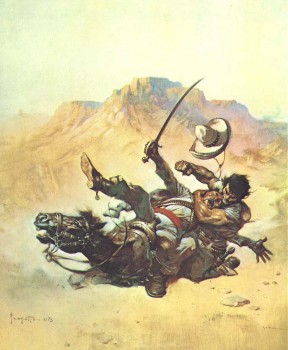Red Sonja 10
 So this story opens with Red Sonja and the inexplicably-still-unslain Suumaro on a reconnaissance mission. They’re traveling by raft into the least-fortified part of Skranos to gather intelligence on its fortifications. After I wrote that sentence, I realized that if they already know what part of the city is least-fortified, then haven’t they already scoped out the fortifications?
So this story opens with Red Sonja and the inexplicably-still-unslain Suumaro on a reconnaissance mission. They’re traveling by raft into the least-fortified part of Skranos to gather intelligence on its fortifications. After I wrote that sentence, I realized that if they already know what part of the city is least-fortified, then haven’t they already scoped out the fortifications?
Never mind. They never make it into the city this issue anyway. Before the first page is turned, Sonja, Suumaro, and the retinue of soldiers they brought with them are attacked by winged demon-people. Suumaro is all-too-familiar with the creatures, saying that his sorceress mother, Apah Alah, created them as guardians. Sonja asks what she used them to guard.
A better question might be what kind of spy mission includes the leader of the resistance movement, a woman who drunkenly challenged the entire army to kill her, a dozen armed men, and their horses? How exactly were they expecting to slip in unnoticed?
Again, never mind. We’ve got harpies to fight. Well, for a page and a half. The harpies (or whatever) kill all the other men, as well as the horses. (Have I mentioned how badly horses get treated in this series?) Leaving Red Sonja and Suumaro on the shore of a forest. Capping the trunk of one of the largest trees is a castle.
Yeah, a castle is growing out of a tree. It’s just there, by the shore between Skranos and the rebel encampment. And nobody noticed a castle growing out of a tree up until now.
And since this Red Sonja, you guessed it. She freaks out for one panel, then moves on. Because mildly freaked out is just how she’s learned to function.
